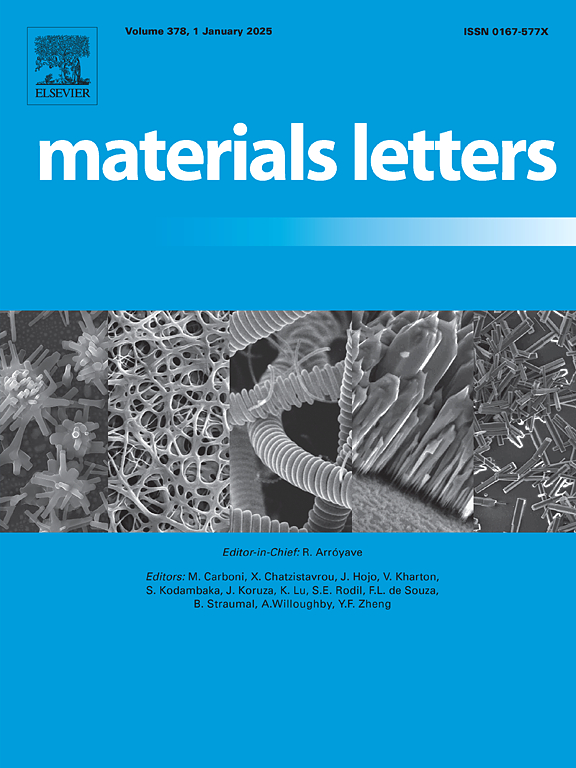Computational modelling and simulations of the structural, electronic, and vibrational properties of PbS2
IF 2.7
4区 材料科学
Q3 MATERIALS SCIENCE, MULTIDISCIPLINARY
引用次数: 0
Abstract
Theoretical predictions of electronic structure, density of states and phonon dispersion are key components in providing an accurate description of bulk materials at the atomic level. In this work, the direct-bandgap semiconducting nature of a heavy-metal-based material was assessed, and a small bandgap energy of 0.62 eV at the Γ point was identified with hybrid functionals (0.227 eV with generalised gradient approximations). Finally, phonon calculations predict the possible physical/dynamic instability of the studied PbS2 systems.
PbS2结构、电子和振动特性的计算建模和模拟
电子结构、态密度和声子色散的理论预测是在原子水平上准确描述大块材料的关键组成部分。在这项工作中,评估了重金属基材料的直接带隙半导体性质,并通过杂化泛函确定了Γ点的小带隙能量为0.62 eV(广义梯度近似为0.227 eV)。最后,声子计算预测了所研究的PbS2系统可能的物理/动态不稳定性。
本文章由计算机程序翻译,如有差异,请以英文原文为准。
求助全文
约1分钟内获得全文
求助全文
来源期刊

Materials Letters
工程技术-材料科学:综合
CiteScore
5.60
自引率
3.30%
发文量
1948
审稿时长
50 days
期刊介绍:
Materials Letters has an open access mirror journal Materials Letters: X, sharing the same aims and scope, editorial team, submission system and rigorous peer review.
Materials Letters is dedicated to publishing novel, cutting edge reports of broad interest to the materials community. The journal provides a forum for materials scientists and engineers, physicists, and chemists to rapidly communicate on the most important topics in the field of materials.
Contributions include, but are not limited to, a variety of topics such as:
• Materials - Metals and alloys, amorphous solids, ceramics, composites, polymers, semiconductors
• Applications - Structural, opto-electronic, magnetic, medical, MEMS, sensors, smart
• Characterization - Analytical, microscopy, scanning probes, nanoscopic, optical, electrical, magnetic, acoustic, spectroscopic, diffraction
• Novel Materials - Micro and nanostructures (nanowires, nanotubes, nanoparticles), nanocomposites, thin films, superlattices, quantum dots.
• Processing - Crystal growth, thin film processing, sol-gel processing, mechanical processing, assembly, nanocrystalline processing.
• Properties - Mechanical, magnetic, optical, electrical, ferroelectric, thermal, interfacial, transport, thermodynamic
• Synthesis - Quenching, solid state, solidification, solution synthesis, vapor deposition, high pressure, explosive
 求助内容:
求助内容: 应助结果提醒方式:
应助结果提醒方式:


